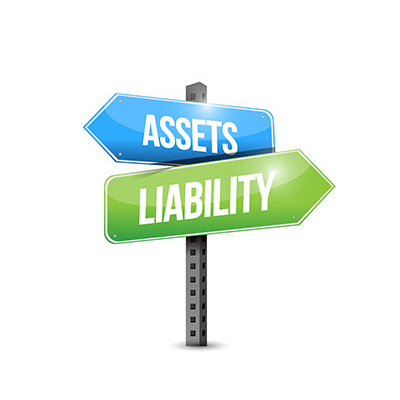
Record keeping for Performance Assessment
August 1, 2017
Is Negligence Costing Startups? Steps to Keep your Finances in Order
August 1, 2017Recordkeeping measures for Assets and Liabilities
(This is the 2nd part of a four part series)
As we mentioned in our earlier blog, a lot of startups face difficulty later in time, when they fail to maintain proper records regarding their assets and liabilities. Here are some measures to be taken for recording assets and liabilities.
Record of Assets
Actual assets held by the company and its net realizable value can be considered as the minimum value of a company while negotiating with an investor.
- Fixed Assets
In most of the companies, Fixed Assets form a major part of the company’s investment cost. Though value of fixed assets and depreciation are disclosed in balance sheet, item wise details of Fixed Assets should be maintained within FAR (Fixed Assets Register). Fixed assets should be tagged with a code for identification. It is a good practice to carry out for physical verification of Fixed Assets on annual basis and maintain a record of verification signed by persons who carry it out.
- Inventory
For some of the businesses inventory is a major component in their working capital or even investment. If inventory usage is very high, details of inventory inward, consumption, shrinkage and outward should be maintained and periodically verified.
Cash and Bank Transactions
Cash and Bank are the most liquid form of assets. They are the main medium for settling transactions. Due to its high liquidity, especially cash transactions need to be closely monitored and documented. Following are few critical considerations for cash and bank related documentation:
- Records of transaction should be recorded (in manual form, if accounting software is not used) promptly, when it occurs.
- Details of individuals’ receiving/paying should be recorded.
- Only company related payments and receipts should be recorded within the company records. Companies should not make personal payments/ receipts through company accounts.
- All payments and receipts should be matched with the relevant invoice to enable analysis of receivables and payables.
- Person not responsible for handling cash should carry out physical verification of cash at least on a monthly basis.
- Prepare bank reconciliation statements to identify and recognize differences in balance as per accounting records and bank statements.
Loans
Loans are taken by SMEs to meet the investment requirement at an early stage. This type of investment is expected to be paid back at a certain point of time unlike capital. Any new investor expects to get details of existing loans of a company prior to investing in the company in order to assess the financial structure of the company. Proper documentation of loans can be ensured by adopting following basic measures:
- Initial documents related to the loan should be maintained by the company in order to help management understand parameters based on which the loan was taken. These are also necessary in order to check payments related to the loans and at the time of dispute settlement, if any.
- In case of loan taken from individual or through informal channel, the contract laying out the details of the loans should be maintained. Even in cases of loans taken from close individuals such as family and friends, proper documentation should be maintained.
- All repayments should be recorded with bifurcation for principle and interest along with acknowledgement from the loan provider.
- Periodic confirmation from the bank/institutions/individuals from whom the loans are taken should also be received in the form of statements or certificates.
Read also:
Is Negligence Costing Startups? Steps to Keep your Finances in Order

